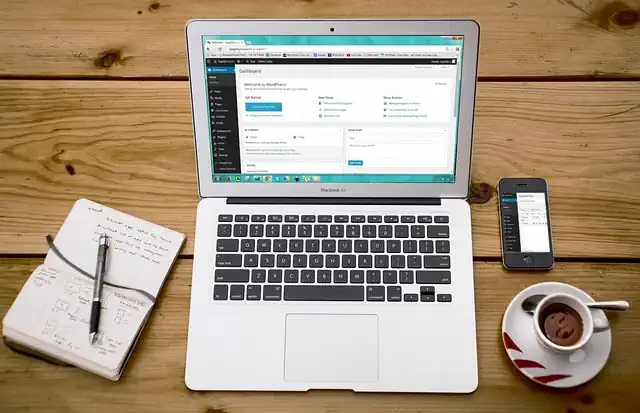How To Make Money As An Android Developer
Introduction

As an Android developer, there are several ways to make money. In this article, we will discuss some of the most popular methods that can help you earn a decent income. Whether you are a beginner or an experienced developer, these tips can help you monetize your skills and turn your passion for coding into a profitable career. So, let’s get started!
Monetizing Your Android App: Strategies and Best Practices
As an Android developer, you have the potential to make a significant amount of money from your app. However, monetizing your app can be a challenging task, especially if you are new to the industry. In this article, we will discuss some strategies and best practices that can help you make money as an Android developer.
The first step in monetizing your app is to choose the right monetization model. There are several monetization models available, including in-app purchases, subscriptions, advertising, and paid apps. Each model has its advantages and disadvantages, and you should choose the one that best suits your app and target audience.
In-app purchases are a popular monetization model that allows users to purchase additional features or content within the app. This model works well for apps that offer a freemium model, where the app is free to download, but users must pay to access premium features. In-app purchases can be used to unlock new levels, remove ads, or access exclusive content.
Subscriptions are another popular monetization model that works well for apps that offer ongoing services or content. This model allows users to pay a recurring fee to access premium content or features. Subscriptions can be used for apps that offer news, music, or video content.
Advertising is a common monetization model that involves displaying ads within the app. This model works well for apps that have a large user base and can generate significant ad revenue. However, it is essential to balance the number of ads with the user experience to avoid alienating users.
Paid apps are a straightforward monetization model that involves charging users to download the app. This model works well for apps that offer unique or niche content that users are willing to pay for. However, it can be challenging to convince users to pay for an app when there are so many free alternatives available.
Once you have chosen the right monetization model, it is essential to optimize your app for monetization. This involves designing your app with monetization in mind, such as placing ads in strategic locations or offering in-app purchases at the right time. It is also essential to track your app’s performance and make adjustments as needed to maximize revenue.
One of the best ways to optimize your app for monetization is to use analytics tools. These tools can provide valuable insights into user behavior, such as how long they spend in the app, which features they use the most, and which ads generate the most revenue. By using this data, you can make informed decisions about how to monetize your app effectively.
Another important factor in monetizing your app is to build a loyal user base. This involves creating a high-quality app that users enjoy using and providing excellent customer support. By building a loyal user base, you can increase the likelihood that users will make in-app purchases or subscribe to your app’s premium content.
Finally, it is essential to stay up-to-date with the latest trends and best practices in app monetization. The app industry is constantly evolving, and what worked yesterday may not work today. By staying informed and adapting to changes in the industry, you can ensure that your app remains profitable and successful.
In conclusion, monetizing your Android app requires careful planning and execution. By choosing the right monetization model, optimizing your app for monetization, building a loyal user base, and staying up-to-date with the latest trends and best practices, you can make money as an Android developer. With hard work and dedication, you can turn your app into a profitable business and achieve success in the competitive world of app development.
Freelancing as an Android Developer: Finding Clients and Setting Rates
As an Android developer, there are several ways to make money. One of the most popular options is freelancing. Freelancing allows you to work on your own terms, choose your clients, and set your own rates. However, finding clients and setting rates can be challenging. In this article, we will discuss some tips on how to find clients and set rates as a freelance Android developer.
Finding Clients
The first step in freelancing as an Android developer is to find clients. There are several ways to find clients, including:
1. Networking: Attend networking events, conferences, and meetups to meet potential clients. You can also join online communities and forums to connect with other developers and potential clients.
2. Referrals: Ask your existing clients for referrals. Word of mouth is a powerful marketing tool, and satisfied clients are likely to refer you to their friends and colleagues.
3. Job boards: There are several job boards specifically for freelancers, such as Upwork, Freelancer, and Fiverr. You can create a profile on these platforms and bid on projects that match your skills and experience.
4. Social media: Use social media platforms like LinkedIn, Twitter, and Facebook to promote your services and connect with potential clients.
Setting Rates
Once you have found clients, the next step is to set your rates. Setting rates can be tricky, as you want to be competitive while also ensuring that you are being paid fairly for your work. Here are some tips on how to set your rates:
1. Research: Research the market rates for Android development services in your area. This will give you an idea of what other developers are charging and help you set a competitive rate.
2. Consider your experience: Your experience level will also play a role in setting your rates. If you are just starting out, you may need to charge lower rates to attract clients. As you gain more experience and build your portfolio, you can increase your rates.
3. Consider the project scope: The scope of the project will also impact your rates. A simple app with basic features will require less time and effort than a complex app with advanced features. Consider the project scope when setting your rates.
4. Be transparent: Be transparent with your clients about your rates and what they include. This will help avoid any misunderstandings or disputes down the line.
5. Negotiate: Don’t be afraid to negotiate with clients. If a client is offering a lower rate than you are comfortable with, you can negotiate for a higher rate or additional benefits, such as a longer deadline or more frequent check-ins.
Conclusion
Freelancing as an Android developer can be a lucrative and rewarding career path. However, finding clients and setting rates can be challenging. By networking, asking for referrals, using job boards, and promoting your services on social media, you can find clients. When setting your rates, consider market rates, your experience level, the project scope, and be transparent with your clients. Don’t be afraid to negotiate with clients to ensure that you are being paid fairly for your work. With these tips, you can successfully freelance as an Android developer and make a living doing what you love.
Creating and Selling Android App Templates on Marketplaces
As an Android developer, there are several ways to make money. One of the most popular ways is by creating and selling Android app templates on marketplaces. This is a great way to earn passive income and build a portfolio of work that can attract potential clients.
Creating an Android app template is not as difficult as it may seem. You can start by identifying a niche or problem that needs to be solved. Once you have identified the niche, you can start designing the app template. The design should be simple, user-friendly, and visually appealing. You can use tools like Sketch, Figma, or Adobe XD to create the design.
After designing the app template, you can start coding it. You can use Android Studio, which is the official Integrated Development Environment (IDE) for Android app development. Android Studio provides a range of tools and features that make it easy to develop Android apps. You can also use other programming languages like Kotlin or Java to code the app template.
Once you have coded the app template, you can test it on different devices to ensure that it works as expected. You can also get feedback from beta testers to improve the app template. After testing and refining the app template, you can upload it to marketplaces like CodeCanyon, Chupamobile, or SellMyApp.
Marketplaces provide a platform for developers to sell their app templates to a global audience. They handle the payment processing, customer support, and marketing of the app templates. In return, they take a commission on each sale. The commission varies from marketplace to marketplace, but it is usually around 30% to 50%.
To increase the chances of selling your app template, you need to optimize the listing. This involves writing a compelling description, providing screenshots and videos of the app template, and setting a competitive price. You can also offer support and updates to customers who purchase your app template.
Creating and selling Android app templates on marketplaces is a great way to make money as an Android developer. It allows you to leverage your skills and expertise to create products that can generate passive income. It also provides a platform to showcase your work and attract potential clients.
However, it is important to note that creating and selling app templates is not a get-rich-quick scheme. It requires time, effort, and dedication to create high-quality app templates that can sell. You also need to keep up with the latest trends and technologies in the Android app development industry to stay relevant.
In conclusion, creating and selling Android app templates on marketplaces is a viable way to make money as an Android developer. It requires a combination of design, coding, testing, and marketing skills to create app templates that can sell. With the right approach and mindset, you can build a successful career as an Android app template developer.
Building a Successful Android App Business: Tips and Tricks
As the world becomes increasingly digital, the demand for mobile applications continues to grow. Android, being the most popular mobile operating system, has a vast market for app developers. If you are an Android developer, you can make a decent income by building and selling apps. However, building a successful Android app business requires more than just coding skills. In this article, we will explore some tips and tricks to help you make money as an Android developer.
1. Identify a Niche
The first step to building a successful Android app business is to identify a niche. You need to find a gap in the market and create an app that solves a problem or meets a need. Conduct market research to identify the most popular app categories and the most significant pain points for users. Once you have identified a niche, focus on building an app that provides a unique solution.
2. Build a Quality App
The success of your Android app business depends on the quality of your app. Users expect apps that are easy to use, visually appealing, and functional. Ensure that your app has a user-friendly interface, fast loading times, and minimal bugs. Test your app thoroughly before launching it to the market to ensure that it meets the highest standards.
3. Monetize Your App
There are several ways to monetize your Android app. You can charge users to download your app, offer in-app purchases, or display ads. Charging users to download your app is a straightforward way to make money, but it may limit your user base. In-app purchases allow users to buy additional features or content within the app, while ads generate revenue through clicks or impressions. Choose a monetization strategy that aligns with your app’s purpose and target audience.
4. Market Your App
Marketing is crucial to the success of your Android app business. You need to create awareness of your app and convince users to download it. Use social media, email marketing, and other digital marketing channels to promote your app. Collaborate with influencers and bloggers in your niche to reach a wider audience. Ensure that your app’s description and screenshots are compelling and accurately represent your app’s features.
5. Listen to User Feedback
User feedback is essential to improving your app and growing your Android app business. Encourage users to leave reviews and ratings on the app store and respond to their feedback promptly. Use user feedback to identify areas for improvement and implement changes that enhance the user experience. Continuously updating and improving your app will keep users engaged and increase your app’s popularity.
6. Build a Strong Brand
Building a strong brand is crucial to the success of your Android app business. Your brand should reflect your app’s purpose and values and resonate with your target audience. Use consistent branding across all your marketing channels, including your app’s icon, name, and description. A strong brand will help you stand out in a crowded market and build trust with your users.
In conclusion, building a successful Android app business requires more than just coding skills. You need to identify a niche, build a quality app, monetize it, market it, listen to user feedback, and build a strong brand. With these tips and tricks, you can make money as an Android developer and build a successful app business. Remember to stay up-to-date with the latest trends and technologies in the mobile app industry to stay ahead of the competition.
Maximizing Revenue with In-App Purchases and Advertisements
As an Android developer, you have the potential to earn a significant amount of money through your apps. However, simply creating an app is not enough to guarantee revenue. In order to maximize your earnings, you need to incorporate in-app purchases and advertisements into your app.
In-app purchases are a great way to generate revenue from your app. By offering users the ability to purchase additional features or content within the app, you can create a steady stream of income. However, it is important to ensure that the in-app purchases are not too expensive or too frequent, as this can turn users off and lead to negative reviews.
One effective strategy for in-app purchases is to offer a free version of the app with limited features, and then offer a paid version with additional features. This allows users to try out the app before committing to a purchase, and can increase the likelihood of them making a purchase.
Another way to maximize revenue through in-app purchases is to offer subscriptions. This is particularly effective for apps that offer ongoing services, such as fitness or meditation apps. By offering a monthly or yearly subscription, you can create a steady stream of income and ensure that users continue to use your app over a longer period of time.
In addition to in-app purchases, advertisements can also be a lucrative source of revenue for Android developers. However, it is important to ensure that the advertisements are not intrusive or disruptive to the user experience. This can lead to negative reviews and a decrease in downloads.
One effective strategy for advertisements is to offer users the ability to remove ads for a small fee. This allows users who are willing to pay to have a better user experience, while still generating revenue from those who choose to keep the ads.
Another way to maximize revenue through advertisements is to use targeted advertising. By using data such as user location and search history, you can ensure that the advertisements are relevant to the user and more likely to result in a click-through.
It is also important to consider the placement of advertisements within the app. Placing ads in areas where users are more likely to see them, such as during loading screens or between levels, can increase the likelihood of clicks and generate more revenue.
In order to effectively incorporate in-app purchases and advertisements into your app, it is important to consider the user experience. Users are more likely to make a purchase or click on an advertisement if it is relevant and does not disrupt their experience with the app.
It is also important to regularly update your app and incorporate user feedback. This can help to improve the user experience and increase the likelihood of positive reviews and downloads.
In conclusion, incorporating in-app purchases and advertisements into your Android app can be a great way to generate revenue. However, it is important to ensure that these features are not intrusive or disruptive to the user experience. By offering relevant and targeted advertisements, and providing users with the ability to purchase additional features or content, you can create a steady stream of income and maximize your earnings as an Android developer.
Conclusion
Conclusion: To make money as an Android developer, one should focus on building a strong portfolio, staying up-to-date with the latest technologies and trends, and networking with potential clients or employers. Additionally, exploring various monetization strategies such as creating and selling apps, offering freelance services, or working for a tech company can also be beneficial. With dedication and hard work, Android developers can earn a lucrative income in this growing industry.





